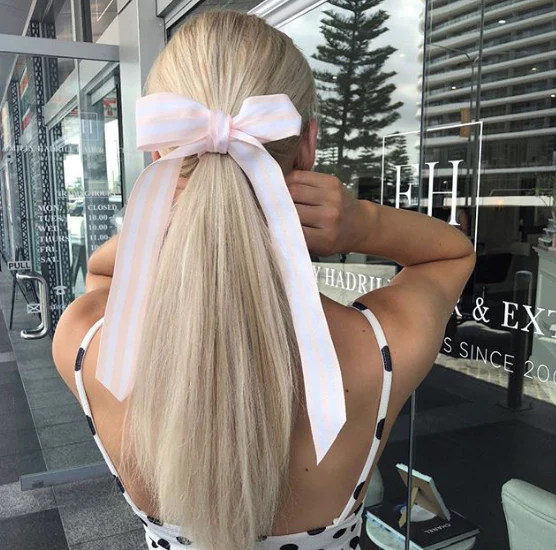


As the festive season approaches and the social calendars start heaving with holiday parties and get togethers, more and more clients begin looking to obtain temporary lengths and/or volume. With so many options available for your client, we spoke to extensions expert Emilly Hadrill on how to best guide your client through achieving their best lengths yet this holiday season.
TJM: What is the number one mistake you see hair extension newbies make?
EH: Shopping on price. Unfortunately it’s just not a good idea when you are talking hair extensions. The process to collect the hair is so intensive that if the price is low, It means the hair has been collected in a way that equals low quality. Eg low quality/priced hair is hair that is collected from hair salon floors that isn’t kept in the right direction as a ponytail would be. The best hair is when a donor is paid for their ponytail and it is cut and the hair is all kept in that direction.
TJM: How can one ensure that their extensions remain in prime condition?
EH: Hair care/products is the most important part. The hair is real human hair but it is no longer connected to a source of nutrients (the scalp) so every time we heat style it, expose it to the weather elements etc it will be damaged slightly. Therefore it is important to regularly use the right products that add moisture to the hair, and avoid products that dry out or tangle the hair such as high alcohol and protein products.
TJM: Is there a difference in summer vs winter hair extension care?
EH: The only difference I would say is that in winter the weather can dry out the hair a little more than normal so keeping up with the moisture treatments is essential. In summer if you are swimming at the beach it is suggested to use a protective spray before getting your extensions wet, and then washing as soon as possible afterwards. If you are blonde it is best to minimise the extensions’ exposure to chlorine as it can discolour the extensions. If you are going to swim in a chlorine pool it is suggested to use a protective treatment before entering.
TJM: How do you advise your clients in deciding what hair extensions are right for them?
EH: We offer complimentary in depth consultations in our salons where we will chat about your likes and dislikes. It is about finding the best method that suits the clients’ lifestyle as well as hair type. Eg if the client has very thick hair sometimes the weft method is best as it will cover more of their natural hair and create a more natural look, whereas in super fine hair a set of invisible tape extensions might be recommended as they are very lightweight and easy to hide. We can also cater to different budgets by choosing a classic method of extensions over an invisible method, which is still incredibly discreet and comfortable.
TJM: Is there a type of hair extension to suit all clients?
EH: Most extension methods can suit majority of clients, but there will always be little things that will match better for different people. For example, clip in extensions pretty much work for anyone but they aren’t good for someone who wants to have a more permanent method of extensions and wake up each day with the longer/thicker hair.
TJM: Is there anything that you, as an extension expert, wish more clients understood about getting hair extensions?
EH: It’s really important to my team that we educate the client on their natural hair shedding. During a maintenance service where we remove the extensions in order to re-apply them again for a further 6 week period there will be natural hair fall. This is because when we first apply the extensions they are applied on a section of the natural hair, and during the 6 week period our head will shed between 50-100 hairs per day. Many of those will be stuck in the extension bond until we open them up and remove those hairs. Many people worry when they see those strands of hair thinking they are losing hair caused by the extensions, rather than naturally shedded hairs. The great thing is that when extensions are applied correctly will actually help your natural hair grow.